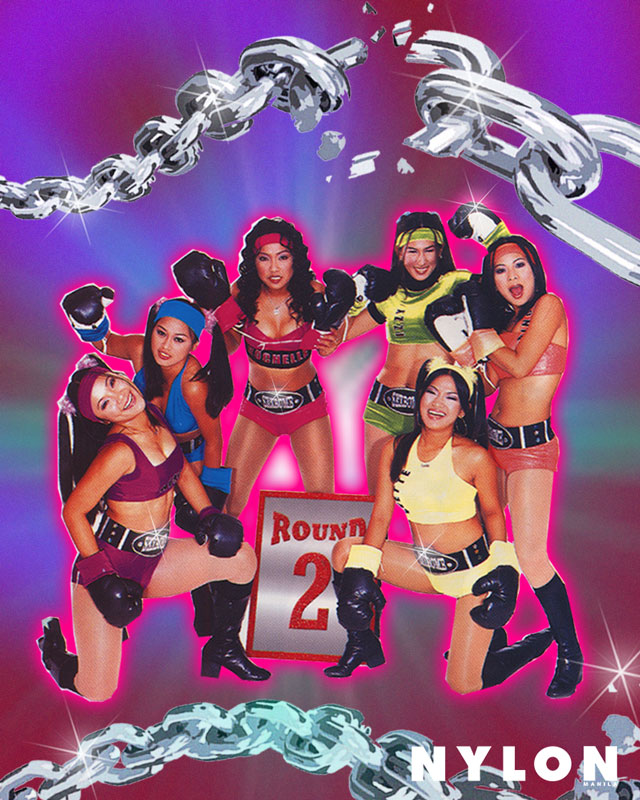THE SEXBOMB Girls’ impact is undeniable—both in Filipino popular culture and in the Asian music scene. The group’s songs are still go-to karaoke staples at birthday parties and family gatherings, especially the crowd favorites “Bakit Papa?” and “The Spageti Song.” Their career highs and the success of these songs have made the girls a household name in the country’s music industry.
Due to this far-reaching success, it is no surprise that their influence still inspires many young Filipino artists today to become well-rounded performers and to take pride in their craft. Productional aspects that amplified the Girls’ impact are also seen among international stars, such as those in the Korean Pop (K-Pop) industry. Whether their influence was direct or indirect, the Girls seem to remain relevant well past the peak of their fame.
Tracing roots
The Sexbomb Girls are arguably the country’s most lauded girl group, with five of their albums obtaining platinum certification. Their first album Unang Putok—with the hit record “Bakit Papa?”—received quadruple platinum from the Philippine Association of the Record Industry. A more impressive feat is their quintuple platinum certification with the album Round 2, with “Spageti” as its opening track. Bomb Thr3at acquired a double-platinum; Sumayaw, Sumunod: The Best of the Sexbomb Girls and Sexbomb’s Sexiest Hits: 3 both received platinum.
Because of their back-to-back achievements, it is easy to dismiss The Sexbomb Girls as an overnight sensation. However, their careers were as difficult as any showbiz job and only began as a way to support their families, their former manager Joy Cancio explains in a recent interview with CNN Philippines. Although the group’s rise to fame was unexpected, their success is a welcomed surprise.
Aside from being successful recording artists, the SexBomb Girls also sold out concerts nationwide and starred in their own TV show entitled Daisy Siete (2003-2010) under GMA Network. Cancio adds that the noontime variety show Eat Bulaga became the game-changer that allowed the Girls to visit different places and display what they had to offer.
Besides offering catchy tunes and fun choreography, Sexbomb resonated with Filipinos because of their unapologetic confidence. “In a place that’s so conservative… dance is an expression which gives them the power to let go,” Cancio explains. She recognizes that there is technique when it comes to producing performances that goes beyond merely singing and dancing.
A striking resemblance
There is a distinct charm when artists use different approaches to enhance the content they release. This tactic is evident in other Asian acts, especially in K-Pop groups where facets of the Sexbomb Girls’ own artistry are observable. A viral Twitter screenshot about Sexbomb becoming the highest-selling girl group in Asia before the fame of groups like 2NE1 and Girls Generation may be a testament to these similarities. Sexbomb was constantly experimenting with their craft, and a striking resemblance has been observed among K-Pop girl groups.
Whether through a starting line (“BLACKPINK in your area!”) or the hook of a chorus (“Itzyyyy”), the single punchline has become an effective way of establishing the brand of K-Pop artists. These catchy one-liners can certainly ignite a cultural chain reaction that lasts years after a song’s release including 2Ne1’s “FIRE” with the memorable “Eh eh eh eh, we’re 2Ne1.”
With verses such as “Get get aw!”and “Apir tayo, sumakit ang ulo ko, sumakit ang bewang ko. Sexbomb, Sexbomb, Sexbomb (Apir tayo, my head hurts, my waist hurts. Sexbomb, Sexbomb, Sexbomb),” the Sexbomb Girls were unforgettable in their own way. They took songs such as “Halukay Ube” to a new level by incorporating lines from Filipino childhood games: “Apir, disapir, one half one fourth one fourth disapir apir.” With ringing hooks and upbeat chants, the Girls established a hyped call and response with the audience through the iconic, “Laban, laban” (“Fight, fight”) and “Bawi, bawi” (“Recover, recover”).
Another trend in Asian pop is creating themes or concepts for songs and albums. Examples include the “cutesy” concept, which is evident in TWICE’s early specialty, or BLACKPINK’s go-to girl crush concept. The Sexbomb Girls were ahead of that game with their own concepts; Round 2 and Bomb Thr3at had boxing and superhero-themed concepts, respectively. In Bomb Thr3at, songs varied from Pinoy hit staples (“Dance Tayo 4ever”) to powerful ballads (“Daisy Siete”), and even farming songs (“Upo upo”). “Upo upo” plays around the traditional folk song “Magtanim ay ‘di biro.” The Sexbomb Girls also displayed versatility with the hero and farming motifs to appeal to their Filipino audience.
Besides utilizing concepts, the Girls also understood the value of choreography as another important aspect of creating iconic pop performances. Wonder Girls’ “Nobody” and Momoland’s “Bboom Bbom” both had a strong grip on Filipinos, triggering a nationwide dance craze. No one can help but move to “Nobody, nobody but you” or “Bboom Bboom’s” catchy steps.
Before Korean acts swooped in the scene, it had already become second nature for Filipinos to dance the spaghetti-like “pataas pababa” (“up and down”) wiggling popularized by The Sexbomb Girls. The live singing and dancing in one of their performances of “Spageti” is proof that, along with coordinated styling and exuberant stage presence, they could have easily competed with modern pop acts today.
Lasting legacies
After grabbing platinums and initiating sensational dances, the nation’s girl group certainly gave Filipinos a “pataas pababa” experience. Although they haven’t officially disbanded, the group has faded out from mainstream music—like most trends in pop culture. The members themselves have pursued other careers and created their own families. Their explosive days have already fizzled out, but living traces of The Sexbomb Girls are still witnessed today in karaokes, jeepney remixes, and even in the modern pop scene.
In fact, there were groups that aimed to follow Sexbomb’s footsteps. Pop Girls (with Nadine Lustre as a former member), XLR8, and RPM received similar training in singing and dancing. Unfortunately, the groups were dissolved after not reaching profitable success only after a few years.
Nonetheless, The Sexbomb legacy lingers and will surely be hard to match by any rising artist. The Girls may not have been the very first to use concepts, unique choreography, or catchy chants, but they are among the first ones to popularize these phenomena in Filipino pop culture. Two decades after the group’s creation, traces of The Sexbomb Girls continue to remain, as they once chanted, “Laban, laban.”






